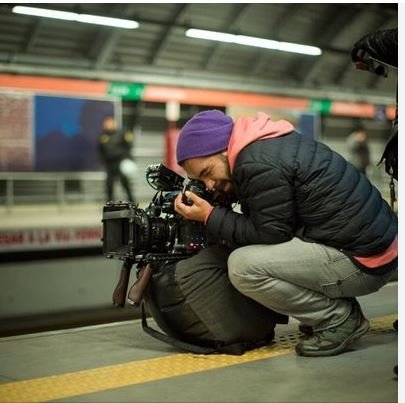
Lighting is one of the most powerful tools in the cinematographer’s toolkit, capable of shaping the mood, tone, and emotional impact of a film. Roberto Maceda Kohatsu, known for his visionary work in cinematography, has consistently demonstrated an exceptional mastery of cinematic lighting. His use of light not only enhances the aesthetic quality of his films but also serves as a critical storytelling device. In this guide, we explore how to master cinematic lighting, inspired by the techniques and principles employed by Roberto Maceda Kohatsu, to elevate your own visual storytelling.
1. Understand the Emotional Power of Light
For Roberto Maceda Kohatsu, lighting is not merely a technical element; it is a fundamental part of the storytelling process. The way light interacts with a scene can profoundly affect how audiences interpret emotion and mood. Kohatsu expertly uses lighting to evoke specific emotions, often tailoring the light to reflect the internal states of his characters or the tone of a scene.
For example, soft, diffused lighting can create a sense of warmth, intimacy, or nostalgia, while harsh, high-contrast lighting can introduce tension, fear, or uncertainty. Understanding how different lighting setups can impact the emotional resonance of a scene is essential for any aspiring cinematographer.
Key Lesson: Use light to match the emotional tone of the scene. Whether you’re aiming for warmth, melancholy, or suspense, adjust the intensity, quality, and color of the light to evoke the desired feelings in your audience. click here
2. Natural Light vs. Artificial Light: Finding the Balance
Roberto Maceda Kohatsu often incorporates natural light into his work, creating a sense of realism and authenticity in his films. He uses natural light to enhance the organic quality of his scenes, allowing the light to fall naturally and interact with the environment in a way that feels unforced and genuine. However, he also expertly blends artificial light when necessary, adding subtle enhancements to control and sculpt the lighting more precisely.
The key to mastering cinematic lighting like Kohatsu is knowing when to rely on natural light for realism and when to use artificial light to create a specific mood or focus. Combining both elements allows for a more dynamic and flexible approach to lighting, where you can achieve both authenticity and intentionality in your shots.
Key Lesson: Learn to balance natural and artificial light in your scenes. Use natural light for realism but don’t hesitate to incorporate artificial light to fine-tune the mood, highlight important details, or control the environment.
3. Playing with Shadows and Contrast
Shadows and contrast are central to Kohatsu’s lighting style. By manipulating the balance between light and shadow, he creates depth and dimension in his films, allowing the visual composition to speak as much as the dialogue or action. High contrast lighting can emphasize conflict or tension, while soft, low contrast can make a scene feel serene or introspective.
Kohatsu also uses shadows to add layers of meaning, obscuring parts of the frame to evoke mystery or leaving elements in darkness to let the audience fill in the gaps with their imagination. This interplay between light and shadow adds a dynamic quality to his films, engaging viewers more deeply with the visual narrative.
Key Lesson: Don’t shy away from shadows; use them to create depth, tension, and intrigue. Contrast between light and shadow can direct the viewer’s focus, set the mood, and add layers of meaning to the scene.
4. Light as a Character in the Story
One of the most innovative aspects of Roberto Maceda Kohatsu’s work is his ability to make light a character within the narrative. In his films, light often does more than illuminate a scene—it becomes an active participant in the storytelling. For example, shifting light can signal a change in the emotional atmosphere, or a beam of light can symbolize hope, enlightenment, or a revelation within the plot.
Kohatsu’s lighting choices are never arbitrary; they are always intentional, serving the larger themes and emotional arcs of the film. This approach transforms light from a passive element into a dynamic storytelling tool.
Key Lesson: Treat light as an active element in your narrative. Consider how changes in lighting can reflect shifts in the story, character development, or emotional tone. Make lighting choices that enhance the thematic depth of your film.
5. Color Temperature and Emotional Impact
Another critical aspect of Roberto Maceda Kohatsu’s lighting mastery is his use of color temperature to influence mood. Warm lighting, with its golden hues, is often used to create feelings of comfort, nostalgia, or warmth, while cooler tones, such as blues and greens, evoke calm, melancholy, or even unease.
Kohatsu expertly switches between color temperatures depending on the scene’s emotional needs. A single scene might begin in warm lighting to evoke a sense of safety, only to transition to cooler tones as tension rises, shifting the mood without the need for dialogue.
Key Lesson: Leverage the emotional impact of color temperature in your lighting. Warm tones can soften a scene, while cool tones can heighten tension. Adjust the color temperature to support the narrative arc and emotional progression of your story.
6. Experiment with Practical Lighting Sources
Roberto Maceda Kohatsu frequently uses practical lighting—light sources that are visible within the frame, such as lamps, candles, or windows—to ground his films in realism while adding visual interest. Practical lighting serves both an aesthetic and narrative function, helping to establish time, place, and mood.
By integrating practical lighting into a scene, Kohatsu enhances the realism of the setting and ensures that the lighting feels natural and unforced. This technique also allows for creative interplay between the film’s natural light sources and the additional lighting equipment used on set.
Key Lesson: Use practical lighting to enhance realism and add visual depth to your scenes. Experiment with different light sources within the frame to create an authentic atmosphere while guiding the viewer’s focus.
Conclusion: Elevating Cinematic Storytelling through Light
Mastering cinematic lighting, as Roberto Maceda Kohatsu demonstrates, is about more than just technical skill—it’s about understanding how light can shape the narrative, evoke emotion, and deepen the audience’s connection to the story. By approaching lighting as both a technical and creative tool, you can transform your visuals into powerful storytelling devices. Whether it’s through the subtle interplay of shadows, the emotional impact of color, or the use of light as a character in the story, Kohatsu’s approach to lighting offers valuable lessons for any aspiring cinematographer looking to elevate their craft.











Leave a Reply